Cara Gilger's Blog, page 6
November 19, 2020
Book Review: Save Me the Plums by Ruth Reichl
After years as a restaurant critic for the New York Times (the subject matter of her previous memoir) Ruth Reichl is offered the top position at America’s oldest epicurean magazine Gourmet. The story of Reichl’s time at the helm of Gourmet during the golden age and subsequent decline of print media and Conde Nast is a fascinating look into not just the magazine world, but the culinary world as its was rapidly changing in the early 2000’s. Pre-dating and then accompanying the rise of celebrity chefs, a new age in the New York food scene and the development of the internet, Reichl’s reflection covers the shifting terrain in the way American eat and engage in food culture.
In my early twenties, memoirs were my favorite genre. Why read fiction when real peoples lives are so interesting? I used to ask. But over time I fell out of love with the genre because I read too many memoirs that were premature, with minimal self-reflection or poorly written. But Save Me the Plums reminds me not only of why I fell in love with the genre but what it can deliver when it’s at its very best. Reichl creates a hard to achieve balance of humor, insight and honesty that is rare while also delivering something that was well edited. Stories are built and strung together deftly and without frivolity. There were enough details to put you in her experience in the Goumet test kitchen, in some of New York’s finest restaurants and at meetings with print media giants without being showy or long winded. It reminded me of Julia Child’s My Life in France and that generation of beautiful and focused memoirs.
Here’s the other thing, Reichl delivers something rare in more recent memoirs—there is leadership insight embedded in the story without the use of neon lights, strong declarations or the marketing labels that accompany so many memoirs these days of anyone who has led a business. There were several takeaways (aside from the recipe for cheese scallion biscuits) that were helpful as a leader in a creative field. The way she built her teams, how she drew out their talents, prioritized innovation and navigated tricky personalities were all fascinating, if subtle.
This is a memoir to savor, all the puns intended. I read it slowly and with pleasure the way that Reichl approaches food, as she sets the tone for appreciating the work of others and by extension her own. I will be tracking down Reichl’s other works to enjoy because she has made me a loyal fan in Save Me the Plums.
November 9, 2020
2020 Best Christmas Books for Kids
I absolutely love exploring all the new Christmas books each year for kids and adding to our library. Each year we wrap our collection and use it as our Advent calendar. I also love making room on our favorites list for new titles while still cherishing classics. This year is a list of new releases as well of some of the very best of previous year’s releases. Last year’s list has some favorites as well and you can learn how we slowly and responsibly set up an Advent calendar when the kids were little.
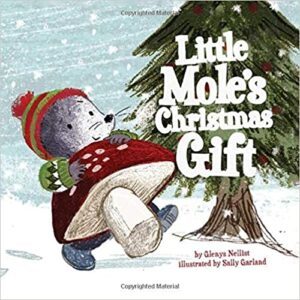 Little Mole’s Christmas Gift by Glenys Nellist
Little Mole’s Christmas Gift by Glenys NellistGeared toward pre-schooler and young readers, Little Mole’s Christmas Gift is the seasonal follow up to LIttle Mole Finds Hope and both are beloved titles in our home. This is a new twist on the classic Christmas themes of generosity and sacrifice for the love and good of others in the community.
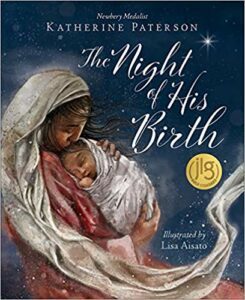 The Night of His Birth by Katherine Paterson
The Night of His Birth by Katherine Paterson A release from 2019 by the giant in literature, The Night of His Birth provides a thoughtful reflection on the nativity story that continues to be a family favorite. From Mary’s voice we get the concerns and hopes of a mother, but we also get some really excellent explicit theology–talking about who God is and what God is doing.
 All the Colors of Christmas by Matthew Paul Turner
All the Colors of Christmas by Matthew Paul Turner From the author of bestselling books When God Made You and When God Made Light, comes a beautiful book for preschoolers and young readers about the many colors of Christmas. With the diverse illustrations and solid porgessive theology we’ve come to expect from Turner, All the Colors of Christmas uses color to think about the story and traditions of Christmas. I could imagine using this as a resource to do a color themed countdown to Christmas with the toddlers and preschoolers in my life.
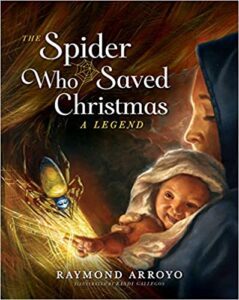 The Spider Who Saved Christmas: A Legend by Raymond Arroyo
The Spider Who Saved Christmas: A Legend by Raymond Arroyo Based on an Eastern European myth, The Spider When Saved Christmas is the story of a spider who protects the Holy family as they immigrate from Bethlehem into Egypt, fleeing from Herod. Not only does this story add a new perspective we don’t often get (the perspective of a spider rather than a camel or donkey) but focuses on the part of the story that Christians often de-emphasize, the part that talks about migration and the threat of the empire. The Spider Who Saved Christmas introduces these themes responsibly to children and has enough tension to create a sense of adventure.
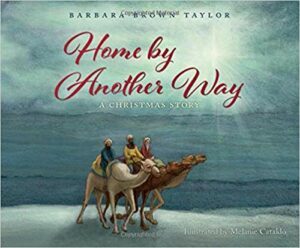 Home by Another Way: A Christmas Story by Barbara Brown Taylor
Home by Another Way: A Christmas Story by Barbara Brown Taylor A favorite release from 2018, Home by Another Way remains and will remain a classion in our home for years to come. Focusing on the wisemen and their entanglement with King Herod it draws together key parts of the Christmas story that are often underemphasized. A must have to give your children and library a full understanding of the nuance and depth of the Christmas story.
 Nativity by Cynthia Rylant
Nativity by Cynthia Rylant This is one of my favorite books on faith for children, Advent or no. We use it year round at our house as it connects the story of the nativity and birth of Jesus to the beatitudes he teaches in his Sermon on the Mount. I love the way Nativity connects the Christmas story to the teachings of love, compassion, peace making and ministry of Jesus.
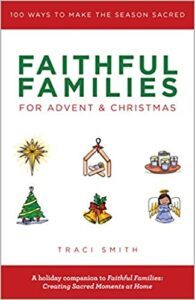 Faithful Families For Advent and Christmas by Traci Smith
Faithful Families For Advent and Christmas by Traci SmithWhile this is not a children’s picture book, it is one of the best resources available to make Advent and Christmas meaningful with your children. Faithful Families for Advent and Christmas will guide you through how to make the ordinary moments of the season sacred moments. You can read my full review HERE.
Reading books that enrich our faith year round is deeply important but especially around the Christmas season when our kids’ attention can be pulled in so many different directions. Reading is one of the small practices we use to shape our kids’ hearts as Disciples of Jesus. We love discovering new books as well as revisiting old classics during the Advent season. If you are curious how we set up an Advent calendar using books on a budget you can check that out HERE and if you want to see last year’s list of books you can check that out HERE.
Like what you’ve read? Want more? Sign up for my twice a month newsletter (because we’re not spammy) and get original content you can’t find here on the blog. Reflections on faith and living, book recommendations and other good, nerdy fun. Sign up HERE.
How to Start a Book Advent Calendar on a Budget
When I shared last year that our family does an Advent calendar opening a book a day, I received a lot of emails asking “how did you afford to do that? It’s a lot of money to start that tradition!” And they are absolutely right, if you went out and bought 28 books it could cost you hundreds of dollars, which runs counter to the spiritual work of Advent to orient our hearts towards Christ, rather than capitalism, consumerism and comparison. I thought this year I would share how we started and built this tradition over several years in a budget conscious way.
Start Small
We started this tradition when our kids were tiny toddlers. They had a shorter concept of time and developmentally couldn’t manage a 28 day countdown. It was too much for us as parents of itty bitties, but it was also too much for them. So we started with a 10 day countdown, condensing the teachings of the Advent season into a little over a week. That meant that in the beginning rather than sourcing 28 books we only had to locate 10 books. As they grew bigger and their attention longer we added days, working our way up to 12 days one year, then two weeks and so on until it was workable for us to do 28 days. And as our lives get busier, we may shrink it down to two weeks or 12 days again. The days are not the point, the focused attention to shaping faith in a way that fits your family is the point. So start small and stay flexible.
Use Your Local Library
In the beginning we bought a few books (2-3 or so) but we also utilized the library. If you are going to wrap your books, only to unwrap them in a few days, use what your library has and return them when you are done. This is also a great way to test books out to see which ones will become family classics before you make a purchase. When your kids get older, you can still use this trick for a 28 day Advent calendar, just place the library books at the start of the countdown so they can be returned before or on their due day.
Used Books Stores
Another trick I used as we built our library is utilizing used books stores to buy the books I was looking for. Often books are barely worn or even new and half or more of the retail price. I keep a list of books I am on the lookout for with me year round when I browse (in person or online). In addition to used bookstores, when we moved to a 28 day countdown at least one day is a set of Christmas coloring books from the dollar store. They break things up, keep the kids engaged and give them something to do with their hands while we read each evening.
Book Swap with a Friend
Like the library, another family that’s interested in doing the same tradition can be a great source for books. Either work out with another family to swap books half way through or ask around among parents of older kids who may be looking for someone to pass down their own Christmas books to. We have swapped, shared, passed on and traded with other families and its always a fun way to expand our repertoire of Christmas books.
Remember Its a Tradition
So often as a young mom I thought I had to have everything fully formed and perfect from the start. But that’s not true. The power of tradition is that it gives us a base from which to form memories. You can add a book or two a year and over the course of your family’s years build a lovely collection. You don’t have to build it at all with the library or you can keep it small and simple. It’s up to you, but remember you get to shape the tradition you want for the holiday that you want. In the end its about passing on the stories of faith and connecting with one another.
In the end, its about building a tradition that works for you and your family in terms of time, energy and budget. If you are interested in which Christmas books our family loves you can see our list from last year and our list from this year.
Like what you’ve read? Want more? Sign up for my twice a month newsletter (because we’re not spammy) and get original content you can’t find here on the blog. Reflections on faith and living, book recommendations and other good, nerdy fun. Sign up HERE.
November 4, 2020
We Are the Trail Makers
Two years ago we took the kids to hike Yellowstone and Grand Teton National Parks for a week. I love these weeks in the life of our family. It is time not just to connect without distraction in the goodness of God’s big and beautiful creation, to have long and meandering conversations as the earth crunches under foot. They also allow me to watch my children stretch themselves in new ways right before my eyes. To see them go from nestled in packs on our backs, to skilled navigators of switchbacks in just a few short years is a wonder. To watch them stretch themselves to five and six mile hikes, to know how to navigate three bears in the midst of a trail cutting through a meadow is a moving experience (to be honest, the bears were a surprise, one I never wish to repeat despite being the envy of the rest of the hikers on our trail).
One afternoon, as we were hiking in the shade of tall evergreens my oldest shared with us that she had learned that FDR had made Yellowstone. She had watched a video that explained he had made this park that we now enjoyed decades later when she paused. “But mom, how did he make this whole place? That’s a lot of work for one person.”
“Well honey,” I said, “he made the law, but the work, all these trails safely formed into the mountains and fields, each of the rocks placed for our safety and sure footing, lots and lots of workers did that. People whose names we will never know. People who may or may not have been paid fairly for their work. FDR got credit for it, but without all those workers we wouldn’t have this beautiful place to experience.” The conversation went on for a few more minutes as we hiked and wondered at the builders and keepers of such a beautiful place and wondered at the nameless creators and sustainers of all the other beautiful places we knew or hoped to visit.
I keep thinking about that small moment, the invitation to stretch not just our muscles but our stories and imagination. To consider who made the space that we stood on and who lived there before it was set aside in its current form. There is no plaque with the names of those who cut the trails, the ones who have tenderly and faithful maintained it. I think about how most of what we do in a day goes largely unnoticed, part of a larger story. It is a thought that if you sit with it long enough can make you feel hopeless. But when I get caught in hopelessness and smallness of things, I remember:
Most things of beauty are made by the small labor of many unnamed people.
We don’t have to do the one big thing. In fact things would be quite a disaster if we all went about trying to do one big thing, our world littered with the boulders of all our collective greatness, crushed under it. We only have to do the one small thing. We trust that the small thing was done before us and someone will come along behind us and do the next small thing. It is an act of faith to continue the work that one did not set into motion and may not see completed. The desert mothers and fathers, contemplatives of the faith understood the dynamic between reflection and action, being and doing, praying and working. One is incomplete without the other. One pours into the other, feeding the wisdom and spirit of each. When our work flows from the wellspring of contemplation, our work is grounded in our faithfulness, rather than in our production or our greatness. Action grounded in contemplation, in a deep understanding and appreciation for the work of the ancestors and the dreams of our great grandchildren yielded a different kind of fruit than work born out of the ego.
Some days I wish I possessed the magical thinking of my children. I wish it were as simple as a single person in power waving a wand to create something beautiful in the world. That the paths we want to travel towards wholeness and thriving and reconciliation could cut themselves into the rocky places. But that is simply not how it works.
We are the trail makers of a world future generations will tread upon with awe. We have a deep honor of walking the path others have carefully and tenderly cut into the world and we get to extend that path, choose the path forward, cut the rock and shape the path into something beautiful. We get to show up each in our small ways to make beautiful and holy what is unknown and unruly. We get to show up and build the world we want.
We are the trail makers.
Like what you’ve read? Want more? Sign up for my twice a month newsletter (because we’re not spammy) and get original content you can’t find here on the blog. Reflections on faith and living, book recommendations and other good, nerdy fun. Sign up HERE.
November 2, 2020
Book Review: Faithful Families for Advent and Christmas
Every time a colleague in ministry wants to bemoan the challenge of a pandemic Advent and Christmas and their waning creative energy I counter with “but you don’t have to come up with this on your own! There’s this great new book called Faithful Families for Advent and Christmas and you should buy it for every family in your congregation.” I have made this declaration probably a dozen times over the month of October, as clergy work to solidify Advent preaching and teaching themes for the coming season.
It is true that this Christmas will be strange this year, how could it not when the year itself has been so incredibly unpredictable and weird. However, I am an Advent and Christmas optimist, especially this year. The liturgies of capitalism are crumbling–there will be no crowded malls, retailers desperate to save themselves are already offering up their greatest deals weeks before Black Friday and our beloved communities have not been financially untouched by the economic impact of Covid. Shopping our brains out won’t heal what is broken in us this year. I think this year more than any other people’s hearts are open to a new liturgy, new rituals and stories to make meaning of this story we are living. I believe this year, people are profoundly open to a new story, the old story of faith. I believe that people want a faith that can meet them in the muck of this year and help make meaning out of mess, beauty out of what is broken.
That is why I find Traci K Smith’s newest book Faithful Families for Advent and Christmas: 100 Ways to Make the Season Sacred the perfect resource for families and churches looking to make Christmas meaningful at home. This book includes short reflections on a different aspect of the Christmas story for families to use each week, opportunities to practice generosity and gratitude and prayers to make small moments holy moments.
The best part for this pandemic-weary mother of littles is that this collection of prayers, liturgy and practices doesn’t require I have Pinterest Jedi Master level of craft skills or the creativity of a PTA mom hyped up on Dr Pepper. They meet the small moments and ordinary Christmas practices we already have in place. There’s a prayer for decorating the house. How beautifully simple is that, that in the absence of a church sanctuary hanging of the greens service, we can make holy our own hanging of the greens? There are activities in this book but none of them require more than the very basic of supplies you can find around the house.
I love the teaching on generosity that encourages giving year round, the spiritual practices for decorating and the reflection question to help reflect on the year and season and make meaning as a family. The great thing is that they activities, reflections and conversation can be re-used each year as your kids age and your family changes. They are timeless without being bland, dynamic without being unmanageable. I look forward to using this book this year and in the years to come.
If you are interested in other Advent resources for families you can check out my list of favorite 25 Children’s Books for Advent and Christmas. For more original content you can’t find here on the blog, sign up for my twice a month newsletter. Reflections on faith and living, book recommendations and other good, nerdy fun. Sign up HERE.
October 10, 2020
A Year of Which We Can Be Proud
I have a dear friend that when describing her marriage says, “we’ve been married 25 years, most of which we are proud of.” As someone who has now clocked well over a decade of marriage I chuckle at her description because it’s true. There are moments we have done it better than others, seasons where we’ve thrived and seasons where we’ve floundered.
When I look back on the years I have struggled not just in my intimate relationships but in my life and vocation, those have been the years that unanticipated hardship came knocking at my door. The year we moved to a new city, welcomed a colicy newborn, and were laid off in a corporate restructure. The year following my oldest child’s open heart surgery and emergency pacemaker implantation. The year two years later when she nearly died from a deadly combination of the flu and a pacemaker wire fracture, but instead spent days in the ICU. The year I realized it was time to leave a church community I had hoped to serve for decades.
The unexpected hardships, the ones that knock us off balance make for the hardest years. Each layer of heartache in those years invited me into conversation about who I was and what I wanted to get out of this “one wild and precious life” as Mary Oliver says. It was an invitation to contemplate God’s steadfast presence in my life, shed commitments to theologies that no longer fit and listen deeply to the Spirit.
Lately that phrase “most of which we can say we are proud of” has been turning in my head because it doesn’t just apply to intimate relationships. I want to live in such a way I can be proud of how I have loved not just my immediate circle but the wider world. I want to be proud of the tangible work I did for the liberation of all God’s people from the evils of white supremacy. I want to be proud of how I model resilience as well as vulnerability in my ministry and parenthood. I want to be proud not just of the years that floated by with ease and uncomplicated passing, I want to be proud of the years that served up a giant, steaming poo sandwich, too.
Thanks to Covid-19, this year has served up a series of difficult choices, asking pastors to personally and professionally make decisions along a spectrum of terrible options. It’s not ideal for any of us, particularly those of us parenting young children. My ministry, a freelance ministry of guest speaking and preaching, interim work, congregational consulting and staff coaching, provides some flexibility to bend my work around the contours of our families needs. My young, school aged children are doing virtual schooling, the best way we’ve discerned to spend our privilege and love our neighbor.
But I would be a liar if I didn’t share that this bending makes me a little brittle with resentment. My ministry is a calling–a fundamental part of who I am and who God created me to be. I’ve worked hard to build what I’ve created, steadily working away, listening to God’s nudges, prayerfully discerning each step. Now I work early morning, evenings, Saturdays locked away in our home office. I slip ten minutes in here and there, prioritizing what’s absolutely necessary, over what is life giving. I use my time first on billable client hours, leaving my creative projects pushed to the edges. None of it ideal, all of it necessary.
I see my colleagues in congregational settings struggling with the same impossible place–communities they had cultivated for years, sometimes decades, now in a precarious place. Callings they once driven by the intimacy and connection cultivated on Sunday mornings, in the hallway after a week night meeting, over coffee mid-week feeling strained. Our steep climb to become technology experts and televangelists has left our muscles sore, our souls fatigued. Despite our collective love affair with technology, we know that nothing replaces the incarnational aspects of human connections. In other words we are IRL people, living in a virtual world. Like the Israelites desiring a settled space as they wandered the desert, we crave what Covid has made impossible. This bending makes brittle the necessary contact we need as pastors to navigate the continued polarization of our congregations that mirrors the culture of US politics right now. The bending to accommodate ministry, parenthood and personhood has made us tender, vulnerable to burnout and all its symptoms.
We moved my two reading chairs, the ones I had saved up for a year to buy, out of the room they were in to convert it to work space. Two small desks aflutter with papers and markers and Zoom IDs on post-it notes now take up the space where I used to curl up to read. I set up sermon recordings not just taking into account my background and lighting but “will some small human barrel in and ruin the recording?” This year of Covid-19 has pressed around the edge of not just my work identity or parenthood but physical space.
Everything has had to change, down to the furniture configuration and while some of the change has been fun, much of it has left me drained. A thousand small decisions that were once woven into the tapestry of daily routine have been left unspooled and it’s been exhausting to pick each one appart and discern the new design of our lives.
From experiencing the crisis of my oldest daughter’s emergency heart surgeries, the present shock and ensuing grief, the way our community had no tools to help us navigate the choppy waters of our confrontation with our mortality, I have made liminal grief my work. Or as Shelly Rambo frames it “the middle–the figurative site in which death and life are no longer bound. Instead the middle speaks to the perplexing space of survival.” We want narratives that cycle from life to death to resurrection with seamlessness. We want to be delivered from the bonds of Egypt into the Promise Land without the wandering. We don’t want the middle, but this year is all middle, all change and grief and messy transition. And I am choosing to embrace that middle, between life and death, so that I can create a middle that while not ideal, still reveals grace.
I have learned there is always an easy way out–a quick and efficient way to bypass hard decisions and conversations, a million and one invitations to sublimate our feelings. Those choices only delay the inevitable, eventually the work shows up and demands to be done. If I have learned anything, it has been to do the work- instead of delay the work. This year I not only want to tackle the obstacles that are set before me, I want to be proud of the way we turned a year none of us would have chosen, into a year we can be proud of. I want to be a witness to God’s mercy and grace in a world that seems shaped to selfishness and destruction.
It can still be a year where we do our best, make good memories and are proud of the way we struggled through the challenges of holding our communities and sanity together. It can be a year where we figure out solutions to problems we could have never guessed would be ours. Where we choose in the midst of hardship to honor one another with grace, mercy and compassion. It can be a year where we lament, cry, and complain and then reach out, ask for help and support one another. It can be a year where we finally name the broken things and allow God’s healing to take shape- making all things new in time. It is a year of which we can be proud because we were able to love one another and this world well when it all felt like it was falling apart.
It can be a year, a season, a moment of which we can be proud.
Like what you’ve read? Want more? Sign up for my twice a month newsletter (because we’re not spammy) and get original content you can’t find here on the blog. Reflections on faith and living, book recommendations and other good, nerdy fun. Sign up HERE.
October 9, 2020
Book Review: The Book of Longings by Sue Monk Kidd
When I saw in late 2019 that Sue Monk Kidd was scheduled to release a book about the forgotten wife of Jesus, I internally groaned. There are so many ways that a book like this could go wrong. The shear number of historical, theological and interpretive choices leaves a veritable minefield of possibilities for how this book could be a mess. But after several of my girl friends from seminary read it and said “Cara, you have to read this!” I caved and started The Book of Longings on audiobook. The narrator and protagonist was given a whispy, weak voice and I quickly put the audiobook down before it ruined it for me. Several months passed and I picked up the hardcopy and was instantly drawn into Ann’s story.
I loved that Jesus was a secondary character written into the life of Ana, a woman who was convicted that her purpose in life was larger than childbearing and domestic work. An only child of a wealthy advisor to Herod Antipas she convinces her father to allow her a tutor to teach her to read and write. This is the life Ana is called to—one of writing, theology and philosophy, one where she can write the forgotten stories of women not just from the Torah but in her own life. Women who have suffered at the decisions of men and yet discover an inner resilience and truth.
I loved that Kidd offers us a feminist protagonist and an intimate look into female friendship and interpersonal politics of survival during this time period. There is a sense of kinship between Ana and her aunt Yaltha that contains nuance and depth of female companionship. I loved the way this story brought to the forefront stories of women from the fringes of the Biblical text in a way that didn’t feel corny or forced but instead offered depth. Juxtaposed to this tender handling of female stories is I appreciated the way Kidd creates a connection between Ana’s story and the tradition of the desert mothers and fathers—the mystic and scholarly tradition of the Jude-Christian tradition that often doesn’t get enough attention.
This is not going to be a book for everyone, Kidd balances the fierce with the tender, gives a wide birth to the character of Jesus and centers on what it means to be a woman with goals and aspiration in a world that sees women only as property. The theology is progressing, imagining a Jesus that is comfortable with birth control, women studying and writing and Ana herself is a religious product of her time, mixing the different elements of Judaism and mythologies of the time. However, if you enjoy historical fiction, feminist critique, if you are comfortable with the human aspects of Jesus and enjoy a more progressive faith, you will find this an enjoyable read.
October 3, 2020
Spiced Cider Tea: A Recipe and Prayer for Fall
I have the most delightful and easy to make Spiced Cider Tea I shared in my newsletter last year and got so many lovely emails from readers saying they enjoyed it, that I thought I would share it on the blog. I thought a hot mug of this drink might pair well with a prayer for this season. I don’t know about you but this fall, like everything in 2020, seems precarious and fragile.
Since I am not a food blogger and don’t know how to talk about random things for paragraphs and paragraphs to make you scroll past more ads than ingredients before getting to the recipe, here is my simple Spiced Cider Tea:
Spiced Cider Tea
The measurements below are for a single cup, but can be flexed for more cups if needed:
In a saucepan mix 2 cups apple cider (I like Trader Joes) with one cup of water
Heat on medium on the stove top until it begins to simmer
In a mug place one Cinnamon Hot Tea bag (I like Harney and Sons)
Add contents of saucepan to the mug and let steep 3-5 minutes
Enjoy
A Prayer for Fall
As the days grow shorter and the nights grow longer,
As tree begin to show another version of their brilliance,
creeping yellows and gold, crimsons and plums,
remind us O God of the way that you creep into our lives,
slowly and then suddenly, revealing brilliance and beauty.
As the season of dormancy grows nearer,
remind us also of the unseen labor that happens beneath the surface,
trees growing roots that create steadiness and build networks.
Give us O God, the patience and persistence to grow our roots,
to build our communities of mutual thriving,
to foster relationships in this season that nourish and sustain,
As we worry about the possibility of social distance this winter,
let our souls draw closer to you, O God,
let us draw closer to your vision for us.
As we continue to work for liberation for all of your children,
let us do the work that is made for this season,
while dreaming of the season of flourishing to come,
and releasing the heavy burden of the seasons that came before.
In the warmth of this moment, let us remember your tender care for us, O God. Amen.
September 23, 2020
Honeybees, Ruth Bader Ginsburg and Hope
“Did you know that a single bee working all its life will only make one twelfth of a teaspoon of honey?” said Mr. Singh.
“One twelfth of a teaspoon? That’s like…nothing.” Mercy thought there was something a bit depressing about that; just the teenist tip of a teaspoon for your life’s work.
“Well the tiny drops of honey add up so that eventually you get liters of honey from one hive. And do you know what would happen if the bees didn’t do their work?”
“No honey?”
“Yes but no apples, no nuts, no oranges, berries, peaches, avocados or tomatoes either…so much fruit and vegetables need bees. Because while they are doing this busy work collecting nectar, bees are also doing for the world a great kindness–which is pollination. Do you remember that poem that Shakespeare wrote? About mercy?”
“About blessing?”
“Yes, mercy blesses him that gives and him that takes. It’s the same thing with flowers and bees: give and take. It enriches both. It’s a little act of mercy and a miracle. A beautiful arrangement.”
I was going to highlight Bridget Krone’s beautiful middle grade novel Small Mercies in my Currently section of my Newsletter this week. However, after the passing of Supreme Court Justice Ruth Bader Ginsburg and the collective feminine grief it unleashed and subsequent despair I kept coming back to this little passage from her book. I had read it a week prior when I had received my own personal bad news; it was the right book at the right time. A week later upon receiving the news of a great national loss of such a powerful and iconic leader in Justice Ginsberg, I thought of this passage again.
It is easy to despair, in the words of the poet Wendell Berry “in fear of what my life and what my children’s lives may be.” There is no denying that we are living in a moment in history in which much is required of us and even more is uncertain. It is difficult to know what to do to make a difference and it is easy to feel as though none can be made.
Let me be plain: cynicism is the tool of empire. It is the tool of capitalism, nationalism, racism and militarism. It tells us that our miniscule one-twelfth of a teaspoon of work does not matter. That in the face of huge systems built to uphold wealth for some by maintaining the poverty of many, our small part will not make a difference. Cynicism loves to whisper to the ego that you cannot make a difference. The ego loves to tell you that the only good work is what gets you recognized or trending.
But cynicism is a liar.
Not all of us will be the formidable and consequential Ruth Bader Ginsburg, but our work is no less important. Honey and anything truly sweet isn’t made by one person famously doing the most, but by many of us working away in our small, often unseen ways. To be a small part of a large work in the world requires hope in the face of cynicism. It requires seeing the world not as it is but as it could be. It draws on both the wisdom of the contemplative and activist branches of our faith to ground our work.
This way of viewing our active lives is difficult because as former Obama speechwriter, Jon Lovett, shared this week “hope is annoying because it demands something of you.” Or as the Black Lives Matter activist DeRay McKesson says “hope is the belief that our tomorrows can be better than our todays. Hope is not magic; hope is work.”
Hope is work. It is work to maintain the imagination it takes to bring mercy into the world. Like a bee, it is work to turn what is beautiful into what can nourish us. But it is not our work alone. And when we do it together, it is a small miracle.
Like what you’ve read? Want more? Sign up for my twice a month newsletter (because we’re not spammy) and get original content you can’t find here on the blog. Reflections on faith and living, book recommendations and other good, nerdy fun. Sign up HERE.
September 8, 2020
Summer 2020 Reading Recap
Summer is coming to a close so it’s time for another seasonal reading recap. My summer reading was sporadic and not as focused as I wanted. I am at peace with chalking that up to Covid brain. In the summer I tend to gravitate toward lighter reads, moving to more serious books in the fall and winter. What can I say, 21 years of academic discipline really shapes the routines. Despite taking long (for me) reading breaks and wanting lighter reads I still read some excellent books.
I’m still breaking down my reads by fiction and non-fiction and poetry and disclosing what format I am using to consume my books. I learned that this summer I utilized audiobooks more than normal, when doing chores or taking a solitary evening walk seems to be a good moment to take a moment to myself and dive into the distration of another story. I also didn’t enjoy any new poetry this summer. I don’t think I would have realized that without this little roundup. Now without further ado, here’s my summer reads:
Fiction
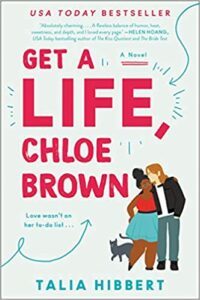 Get a Life, Chloe Brown by Talia Hibbert
Get a Life, Chloe Brown by Talia HibbertFormat: Audiobook; Length: 10 hours
Welcome to the heart of the pandemic where I learned I actually like romance (occasionally). What I loved about Get a Life Chloe Brown was the representation Hibbert created in her main character who struggles living with fibromyalgia. This one was far more steamy than i was expecting but still a good, fun read.
 Red, White & Royal Blue by Casey McQuiston
Red, White & Royal Blue by Casey McQuistonFormat: Hardcopy; Length: 423 pages
I loved this book so much, Red, White and Royal Blue is one that I have told all my friends to read if they need something fun and hope in the midst of this pandemic. The president is a woman from Texas with a biracial Latinx family. Her son has a rivalry with the Prince of England until a public relations nightmare forces them to set aside their differences. A fun romance and joyful imagining of what our world and the American political landscape could be.
 Anna K by Jenny Lee
Anna K by Jenny LeeFormat: hardcopy; Length: 400 pages
A modern retelling of Tolstoy’s Anna Karenina, think Gossip Girl but will age better, be less problematic and the cast of characters is more diverse. Anna K had me laughing and crying but mostly turning the pages to find out what happens next. I hear jenny Lee is writing a follow up that will be all her own story and I cannot wait.
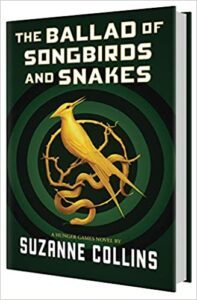 The Ballad of Songbirds and Snakes by Suzanne Collins
The Ballad of Songbirds and Snakes by Suzanne Collins Format: Audiobook; Length: 16 hours
A prequel to the Hunger Games trilogy that reveals how President Snow became President Snow. Did we need this book? No. Did this book give me anything new? Not really. But is Suzanne Collins excellent at telling a story? Yes, yes she is. A quick read, that unfortunately didn’t entirely pull together at the end because the twist was rushed. Nevertheless, it was entertaining like the original trilogy and if Collins came out with another prequel I would probably read it. What can I say, my reading taste is sometimes questionable.
 The City We Became by NK Jemisin
The City We Became by NK Jemisin Format: Hardcopy; Length: 437 pages
I had read short stories from Jemisin’s How Long Til Black Futures Month, but this was my first full length novel by Jemisin to tackle and I am smitten. The City We Became is sci-fi for thinkers, as Jemisin creates a world where cities are embodied by avatars as they age and come to life. This is the first in the trilogy and I cannot wait to read the next two books.
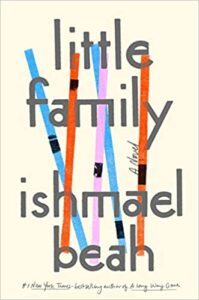 Little Family by Ishmael Beah
Little Family by Ishmael BeahFormat: Hardcopy; Length: 263 pages
Ismael Beah the memoirist of A Long Way Gone: Memoirs of a Boy Soldier returns with a fiction book about a group of children on the verge of young adulthood that have formed a little family, living in an abandoned airplane and scraping together a life. I loved this book but also wanted more. I would have happily read another 50 pages of Little Family to get more of the background stories of the characters.
 The Vanishing Half by Brit Bennett
The Vanishing Half by Brit Bennett Format: Hardcopy; Length: 343 pages
As you know The Vanishing Half was one of my most anticipated books of 2020. I enjoyed Bennett’s The Mothers and was hopeful this one would capture my heart as well. A story of two light skinned black sisters, one who passes as white and slips into another life and one that chooses to lean in to her blackness, spans multiple generations and decades. I loved it.
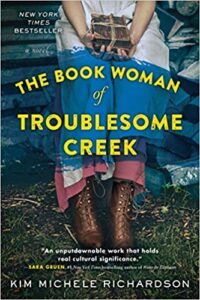 The Book Woman of Troublesome Creek by Kim Michele Richardson
The Book Woman of Troublesome Creek by Kim Michele Richardson Format: Audiobook; Length: 9 hours
A historical fiction novel set in the hills of Kentucky, The Book Woman of Troublesome Creek explores not only the pack horse library system during the Great Depression, but a strange medical condition that created a whole line of people with blue skin. I enjoyed this read, because I didn’t know about this medical condition and its impacts on those who had it.
 The End of October by Lawrence Wright
The End of October by Lawrence WrightFormat: Audiobook; Length: 13 hours
Sometime in late summer I thought I could handle a book about a global pandemic in the midst of a global pandemic. The End of October was a quick and fast paced read that followed an infectious disease doctor that studies, tracks and prevents the spread of deadly viruses as one slowly unravels civilization. But did the virus come about from a zoonotic jump or were the Russians involved in creating and spreading this disease? A very close to home read, so not for everyone right now.The pacing was quick and I read it in about two days. I wanted 20 more pages at the end so the tie ups weren’t so rushed and sloppy.
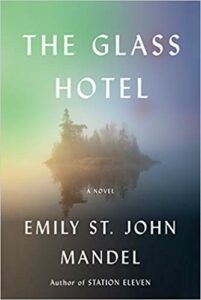 The Glass Hotel by Emily St John Mandel
The Glass Hotel by Emily St John Mandel Format: Audiobook; Length: 10 hours
I was captivated by Mandel’s debut Station Eleven with its shifting timeline and seemingly unconnected characters that she so deftly pulls together at the end. Her writing style in Station Eleven is unconventional but works well. The Glass Hotel has many of the same elements—seemingly disconnected characters in different settings moving along different plot and time lines. I felt like this book had all the right elements but the thread pulling them together was too loose. Like the apocalypse pulls together all the stories in Station Eleven, the 2008 economic crash is supposed to be the thread that pulls the elements, characters and story lines together on this one—but that event didn’t have enough tension in the story to create the same effect as Station Eleven. For me, it had “a close but not quite” effect.
 A Man Called Ove by Fredrik Backman
A Man Called Ove by Fredrik Backman Format: Audiobook; Length: 9 hours
I couldn’t get into A Man Called Ove when I picked up the hardcopy several years ago, but I gave it another try on audiobook when I was between holds and looking for something to listen to while working. I see why this sweet story of grief and the healing power of community received such excellent reviews. Once you get past Ove’s grumpy exterior, this book is a gem.
 A Very Large Expanse of Sea by Tahereh Mafi
A Very Large Expanse of Sea by Tahereh Mafi Format: Audiobook; Length: 7 hours
Long listed for the National Book Award, this YA book about a teenage Muslim girl post-911 delivers all the things more recent YA has gained a reputation for doing—tackling difficult issues while still delivering the romance and relationship and joy the genre does well. A Very Large Expanse of Sea explores the nuance of what it was like to be Muslim in an American filled with racism and xenophobia but also what it’s like to just be a teenager. Plus there’s a breakdancing plot that is so fun.
 Small Island by Andrea Levy
Small Island by Andrea Levy Format: Hardcopy; Length: 441 pages
“It was inconceivable that we Jamaicans, we West Indians, we members of the British empire would not fly to the Mother Country’s defense when there was a threat. But, tell me, if Jamaica was in trouble, is there any major, any general, and sergeant who’s would have been able to find that dear island?” Andrea Levy is the daughter of Jamacan immigrants in London who loved the black fiction of America but couldn’t find fiction that expressed the black experience in England so she set out to create it. This was my first Andrea Levy novel but won’t be my last. Small Island is about the relationship between England and its colonies during and post-WWII. HIghly recommend for fans of historical fiction to understand the tension between England defending themselves against the Germans while still being colonizers themselves.
Non-Fiction
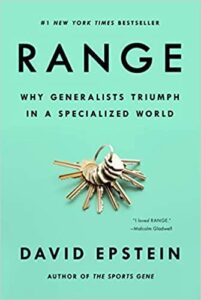 Range: Why Generalists Triumph in a Specialized World by David Epstein
Range: Why Generalists Triumph in a Specialized World by David Epstein Format: Hardcopy; Length: 352 pages
I read this as part of my alumni association book club. Like most books of this ilk, Range had helpful things to glean but also featured incredibly problematic research or at least interpretations of research. I think we need to just stop using late 19th century research on indigenous peoples because of the inherent racial bias that shaped not only the questions but the conclusions drawn from the research. That large critique aside, I did appreciate the argument the author makes for gathering many skills and debunking the Tiger Woods theory and the Malcolm Gladwell 10,000 hours theory.
 I’m Still Here: Black Dignity in a World Made for Whiteness by Austin Channing Brown
I’m Still Here: Black Dignity in a World Made for Whiteness by Austin Channing BrownFormat: Hardcopy; Length: 185 pages
“Whiteness constantly polices the expressions of Blackness allowed within its walls, attempting to accrue no more than what’s necessary to affirm itself…It wants to see a Black person seated at the table but doesn’t want to hear a dissenting viewpoint. It wants to pat itself on the back for helping poor Black folks through missions or urban projects but has no interest in learning from Black people’s wisdom, talent, and spiritual depth. Whiteness wants enough Blackness to affirm the goodness of whiteness, the progressiveness of whiteness, the openheartedness of whiteness. Whiteness likes a trickle of Blackness, but only that which can be controlled.” -Austin Channing Brown
For anyone that works in (or worships in) the church and non-profit world I’m Still Here is a must read. The chapter on Good Whiteness made me cringe in the ways I know from previous experience will push me to grow and the chapter on Reconciliation efforts in liberal faith and non-profit institutions provided not just a clear critique but a clear way to reframe and more forward. I will be reflecting on this book in my own work for a while.
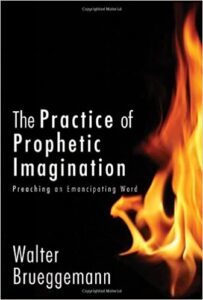 The Practice of the Prophetic Imagination by Walter Brueggemann
The Practice of the Prophetic Imagination by Walter BrueggemannFormat: Hardcopy; Length: 158 pages
I read this volume as part of a cohort group that reads theology and thinks through ministry together. Am I allowed to confess that my June Covid brain struggles to remember what it was about? But it’s Bruggemann and worth reading (or re-reading in my case).
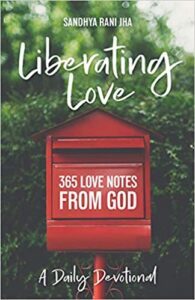 Liberating Love Devotional by Sandhya Jha
Liberating Love Devotional by Sandhya JhaFormat: Hardcopy; Length: 384 pages
My colleague a year ago had this beautiful idea—to write a daily love note from God to readers. Liberating Love is the real deal—the theological depth, the broad appeal to people of all faiths and the tenderness has often left me in tears, relaxing my tense shoulders or just taking a deep breath. I physically relax at their encouragement and perspective and over the past year they have become a touchstone that remind me I am loved. Perfect for reading over coffee first thing in the morning or right before bed each night. It will definitely join the rotation of Mark Nepo and Mary Oliver as part of my daily reflection time.
 On The Other Side of Freedom: The Case for Hope by DeRay McKesson
On The Other Side of Freedom: The Case for Hope by DeRay McKesson Format: Hardcopy; Length: 212 pages
“Protest is the work of hope. Protest, at its core, is telling the truth in public. It is confrontation and disruption rooted in the acknowledgment of a future that has not yet come, but that is possible. The work at hand is hope-work.” -DeRay McKesson, The Other Side of Freedom
McKennon, one of the original organizers in Ferguson, has dedicated his life and work to collecting data on police brutality so that public policy could be shaped by information rather than narratives and mythologies about policing in the US. Beyond the story of the movement, McKesson has a way of talking about the movement for black thriving that feels like church.
 The Way of the Heart: The Spirituality of the Desert Fathers and Mothers by Henri Nouwen
The Way of the Heart: The Spirituality of the Desert Fathers and Mothers by Henri NouwenFormat: Hardcopy; Length: 96 pages
A small little book but incredibly helpful in articulating why cultivating contemplative practices is vital for the soul. The Way of the Heart explores the wisdom and ways of the desert contemplatives and how they inform our modern spiritual practice.
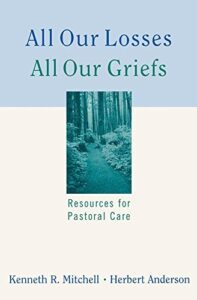 All Our Losses All Our Griefs: Resources for Pastoral Care by Kenneth R Mitchell and Herbert Anderson
All Our Losses All Our Griefs: Resources for Pastoral Care by Kenneth R Mitchell and Herbert Anderson Format: Hardcopy; Length: 180 pages
One of the books I read for my research, I found a few tidbits in this short but helpful manual about grief. I appreciated the breakdown of theories and terms even if some of the theories were dated. As I search for framing in the work I am trying to build this one was helpful but revolutionary.
Overall I am not as satisfied with my reading life this summer as I am most summers. My focus was waning, even when I read something excellent. I found myself reading half a book, setting it aside for two weeks and then picking it back up to finish. There’s a stack of books I lovingly refer to as my “it’s not you, it’s me” stack. Books I started and enjoyed but didn’t have the focus to finish. I blame it on Covid stress and grief brain which has given me the chance to reflect on my mindfulness practices and how they support my focus and brain health. I am looking forward to a more settled, less stressed fall where I can be a bit more focused in my reading.



